26th
November & I
stayed in bed until eight am. I had a look on deck, but not much doing, so
retired to the library. However the weather deteriorated steadily throughout the
morning & by lunch time it was impossible to do anything at all! So I went
to bed & stayed safely tucked up to ride out the storm. Others were not so
lucky: a broken collarbone & a sprained ankle happening to two people! For
the first time on this trip next to no birds recorded!
Southern Royal Albatross
This pair were calling to each other at sea.
Gibson's Wandering Albatross
Notice the capped appearance.
Sooty Shearwater & Gibson's Wandering
Albatross.
Antipodean Wandering Albatross.
The vast majority of the world's population
of this species breeds only here.
This species feeds right across the Pacific Ocean
as far as Chile. before returning here to breed.
Immature
Northern Giant Petrel
White Chinned Petrel
Fulmar Prion
This is a rare species which is not frequently seen
never mind photographed.
Notice the stubby bill & high forehead.
The shade of grey can change according
to the available light.
See this photo & below.
This is a typical good view of a Fulmar Prion,
exhibiting all the identification features.
According to the literature, their centre of breeding
distribution is on the Bounty Islands.
However, we saw plenty here!
Fairy Prion (left) & Fulmar Prion (right).
Same individuals but they have changed places!
Fairy Prion.
Soft Plumaged Petrel
Quite a pale individual.
Grey Petrel
Lucky to see this species as most are further south
at the edge of the pack ice at this time of year.
Sub-Antarctic Shearwater
Some of my best views.
Fulmar Prion
This is a rare species which is not frequently seen
never mind photographed.
Notice the stubby bill & high forehead.
The shade of grey can change according
to the available light.
See this photo & below.
This is a typical good view of a Fulmar Prion,
exhibiting all the identification features.
According to the literature, their centre of breeding
distribution is on the Bounty Islands.
However, we saw plenty here!
Fairy Prion (left) & Fulmar Prion (right).
Same individuals but they have changed places!
Fairy Prion.
Soft Plumaged Petrel
Quite a pale individual.
Grey Petrel
Lucky to see this species as most are further south
at the edge of the pack ice at this time of year.
Sub-Antarctic Shearwater
Some of my best views.
27th
November was
bright & sunny & although the sea was frisky, it had calmed down enough
to go up on deck. It was a time to hang on, but I got some great photos &
two new species to boot: Fulmar Prion
& Grey Petrel! It was a great
mornings sea watching! Brilliant stuff!
Antipodes Islands.
We concentrated our efforts around Ring Dove Bay
in the south-east of the main island.
in the south-east of the main island.
My first sighting of Antipodes Island
There are no natural harbours here.
One cannot land because of its status
as a nature reserve.
But how would you land & climb those cliffs?
The Antipodes Islands are around 800 kms from south island New Zealand. There is a main island & ix smaller islands + numerous islets & stacks. As you can see from the above photographs, cliffs rise up to 150 metres from the sea. It is an imposing landscape! Dense grasslands are predominant. Forest has never established here, mainly due to the ferocious westerly winds which constantly batter these islands.
It was a little rough going into the bay.
It turned out to be a brilliant afternoon,
although bitterly cold!
Sub-antarctic Fur Seal
Male on the left, female right.
Young pups.
Cape Petrel nesting on the cliff.
It is unusual that this bird is nesting
out in the open, probably because there are few
predators around.
Light mantled Sooty Albatross
There is plenty of rainfall here & this
enables large waterfalls to become
established.
Erect-Crested Penguins nest in scattered,
loose colonies.
They nest further up the slopes
than most other penguin species.
Erect-Crested Penguin
Numbers of this species have dropped
from 115,000 nests in 1978 to
34,000 nests in 2011.
Scattered among these colonies are a few
pairs of Eastern Rockhopper Penguin.
Even though there are smaller than the
Erect-Crested, they are more aggressive
& boss them around.
Rockhopper Penguins are also declining
at an alarming rate.
The hair style & those eyes really stand out
from the crowd!
In the afternoon we had a zodiac cruise around Ring Dove Bay just off the Antipodes Island. We were very lucky
with the weather & we were able to close close in to shore. First call was
an Erect-Crested Penguin colony
& we managed to find a few Eastern
Rockhopper Penguin as well. It was a tremendous experience bobbing around
in the surf just watching these great birds.
Reischek's Parakeet
Often feeding close to the wave splashed rocks.
The closest I came!
This is the difficult one to see!
Antipodean Parakeet
They don't come much harder than this species!
Ridiculously remote location, bobbing about on a
zodiac & birds hiding away in tussock grass,
in a gale force wind, before one gets smashed to pieces
on the wave lashed rocks!
Piece of cake!
We then turned to parakeet hunting, there being two
endemic species here: Reischek’s
& Antipodean Parakeets. The
former were quite easy to view just above the wave lashed rocks but the
Antipodean proved more of a challenge until I saw a bird flying by but just over
a cliff! We raced around to the next bay in the zodiacs & there it was,
feeding in the grass! We later found another two birds a little further along
the cliff.
Best birds were:
20+ Eastern Rockhopper Penguin; 500+ Erect Crested
Penguin; 5 Antipodean Wandering Albatross; 2 Gibson’s Wandering Albatross; 15+
Southern Royal Albatross; Black Browed Albatross; 3 Grey Headed Albatross; 3
White Capped Albatross; 5 Salvin’s Albatross; 25+ Light Mantled Sooty
Albatross; 3 Northern Giant Petrel; 10+ Southern Giant Petrel; 50 Cape Petrel;
10 Fairy Prion; 150+ Fulmar Prion; Grey Faced Petrel; 2 Soft Plumaged Petrel; 3
Grey Petrel; 70+ White Chinned Petrel; 50 Sooty Shearwater; Sub- Antarctic
Little Shearwater; Grey backed Storm Petrel; 15+ Black Bellied Storm Petrel; 10
Antarctic Tern; 8 Brown Skua; 10 Reischek’s Parakeet; 3 Antipodes Parakeet; 2
Antipodes Island Pipit & an amazing female House Sparrow sat on an offshore
stack! What the hell is that doing here?









































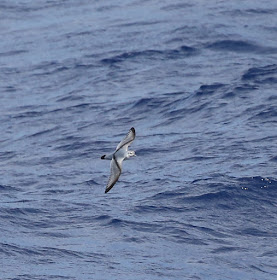















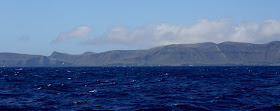

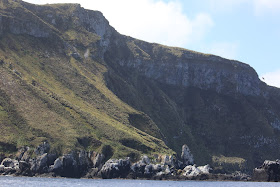



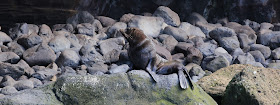

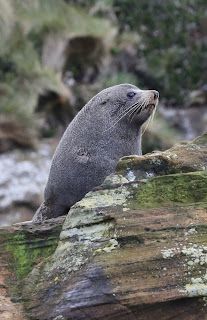


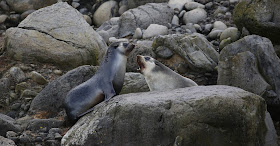
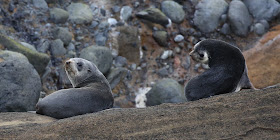











































No comments:
Post a Comment